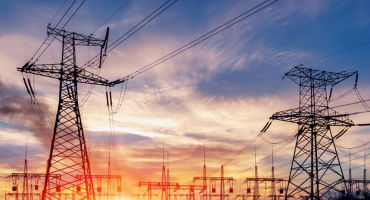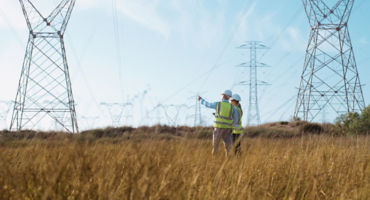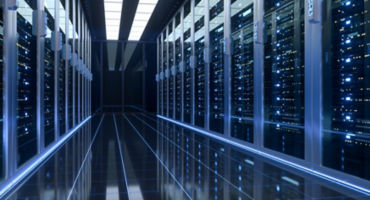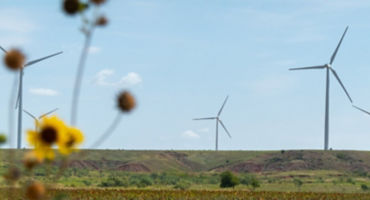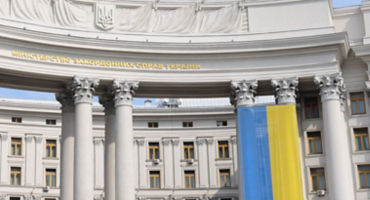Plugging into the electrification trend
Generating more electricity is one part of the puzzle, but I think a way to play this trend in 2025 could be to focus on the electrification of processes that currently rely on fossil fuels, as well as the broader electrification of the grid to distribute electricity. This means electric vehicles not internal combustion engines, electrified agricultural processes rather than their gas-intensive equivalents, and significant investment in modernizing the grid.
Questions have been asked about the trajectory of electricity demand if it emerges that AI models can be trained with less energy than envisaged. While lower energy intensity could lead to lower power demand growth, there is also the potential that improved efficiency could lead to greater demand. This effect — known as the Jevons Paradox — suggests that efficiency gains in AI could actually lead to more companies and industries using it, therefore increasing total demand for AI and, ultimately, power. It will, of course, take time for the full picture of AI's impact on power demand to materialize, but I think it's critical to note that trends around electrification and the energy transition remain strong and intact.
We think publicly listed electric network utilities could offer compelling value to access the electrification opportunity. In the US, regulated utilities are able to recover the cost of their capex investments along with a nominal return (essentially a profit margin), which is set by the regulator. The return is based on the rate base: the value of the assets on which the utility earns its return. If the utility invests in its grid infrastructure or invests to grow its assets to meet greater demand, the rate base increases, enabling the utility to increase its return.
A positive chain reaction for nuclear?
The secular theme around growing power demand dovetails with another increasingly attractive theme: energy security. Against a complex and volatile geopolitical environment, we have come to question the wisdom of relying on one country — or ideally any other country — for energy. As a result, energy independence is becoming a crucial goal for many countries around the world.
This is an especially important goal given the potential for relatively short-term geopolitical crises to impact long-term decarbonization and electrification goals. Prior to the Russia/Ukraine war, Germany was heavily reliant on Russian gas. When supply was cut off, Germany was initially forced to resort to coal — a bitter pill to swallow given its commitment to phase out coal by 2038 — but has since managed to improve its energy security through significant investment in liquefied natural gas (LNG) and renewable energy sources.
So should we just buy more renewables? There is no doubt that renewable power, primarily wind and solar, will continue growing in the coming decades. However, this growth and its related intermittency exposes weaknesses in grid infrastructure and increases the need for more reliable and flexible generation, such as hydro, nuclear, and natural gas, and battery storage. In essence, as renewable penetration increases, renewable power creates oversupply when it is windy and sunny, suppressing prices during those hours. On the converse, when it is neither sunny nor windy, the value of existing grid infrastructure, power storage, and flexible power generation increases, a trend we see continuing for decades to come as wind and solar continue to grow.
As a result, I am less interested in pure renewable developers but prefer instead those companies that have a larger, integrated portfolio of power assets.
Critically, renewables need to be paired with alternative fuel sources given these intermittency challenges. This creates an opportunity for nuclear. Nuclear energy can offer clean and reliable baseload power in a world of rising supply volatility, and I believe it could be a compelling investment opportunity. Many nuclear power plants shut down due to poor economics and safety concerns, but we are starting to see previously shuttered plants reopen on the back of a new wave of interest in nuclear energy contracts.
The nuclear option
I believe nuclear is well positioned to benefit from increased demand for clean energy. In 2025, I see nuclear retaining its importance in a Trump presidency, becoming an important piece of the US and global energy mosaic. I think this could bode well for utilities with exposure to nuclear power — both within the US and further afield — in the year ahead.
Natural gas: the lighter side of energy — with a potential Trump tailwind
Nuclear may be one solution to the world’s complex energy needs but there is another potential solution, which may also accelerate in the year ahead. Natural gas is a fossil fuel, but it emits about half as much carbon dioxide as coal and 30% less than oil, as well as far fewer pollutants per unit of energy delivered.
In 2025, I think natural gas could see a boost under a Trump presidency through easier permitting and lifting of the LNG Export Moratorium. It could also receive a tailwind from any rollback in the Inflation Reduction Act (IRA) that slows solar and wind development.
From pumps to profit?
Within the utilities sector, I believe fully regulated natural gas utilities, particularly US small- and medium-sized gas utilities, could outperform. This is because they have no exposure to renewables or the risk of IRA repeal and additionally benefit indirectly from a potential slowdown in renewable build-out. Outside of utilities, I believe select North American midstream gas infrastructure companies could benefit from rising gas volumes, driven by both accelerated exports and strong domestic consumption. I expect these assets to become increasingly valuable due to natural gas's critical role in the energy transition and the challenges in constructing new gas infrastructure.
Bottom line
It's hard to see the world losing interest in digitalization, AI, or electrification, or to imagine societies demanding less rather than more over time. Infrastructure will remain essential and I believe the long-term trends supporting it are irreversible.
But long-term trends can speed up or slow down. I see 2025 as a year of acceleration for the trends that directly influence infrastructure and believe this could give sectors such as utilities, midstream energy, and nuclear an opportunity to catch other sectors up. Protectionism also has the potential to increase inflation volatility and catalyze a stagflationary environment (higher inflation, lower growth). Exposure to real assets tends to be beneficial in these environments, so layer on the inflation protection that infrastructure can offer to the potential catalysts discussed above, and listed infrastructure could offer the building blocks for a successful 2025.







